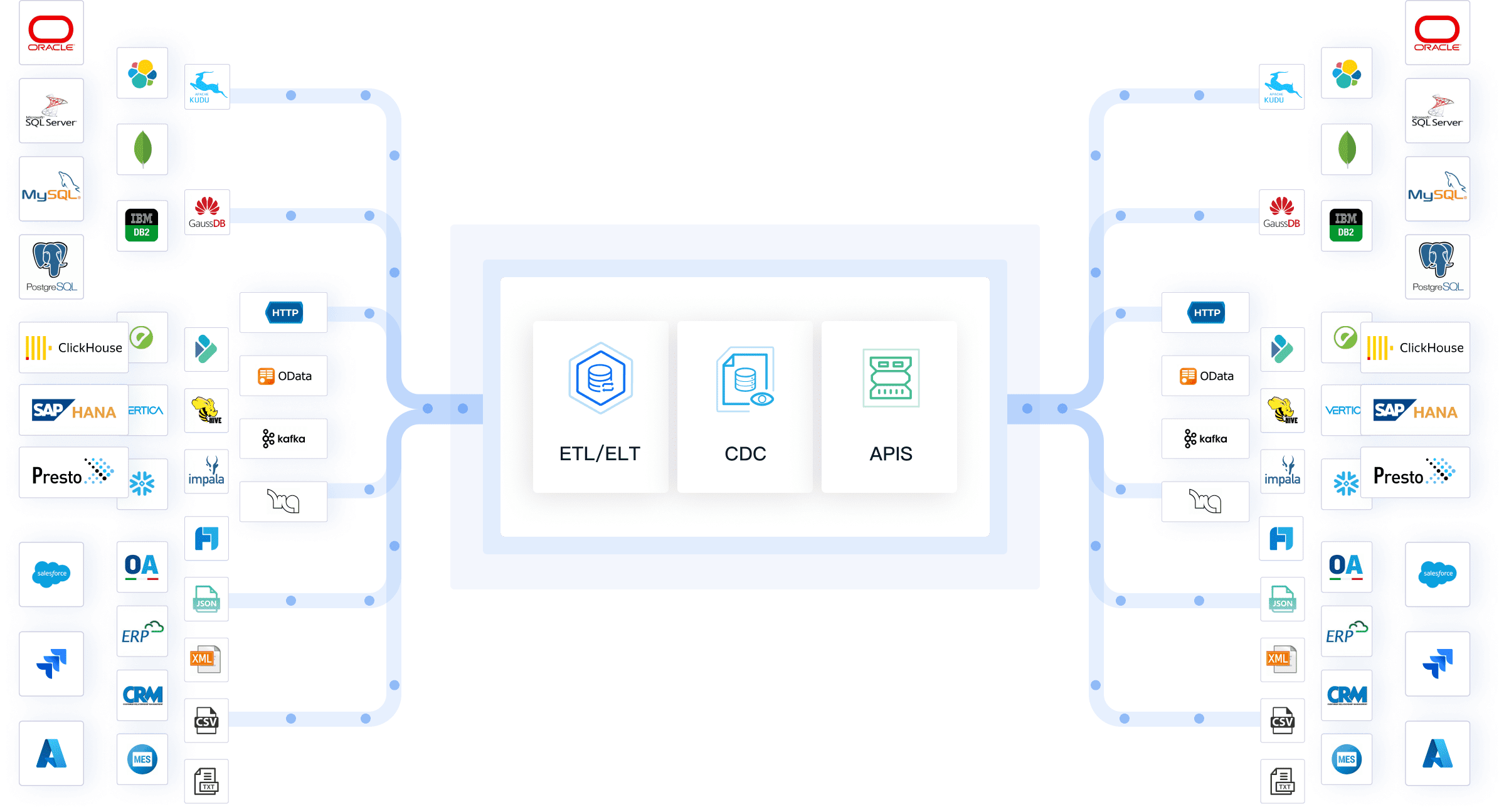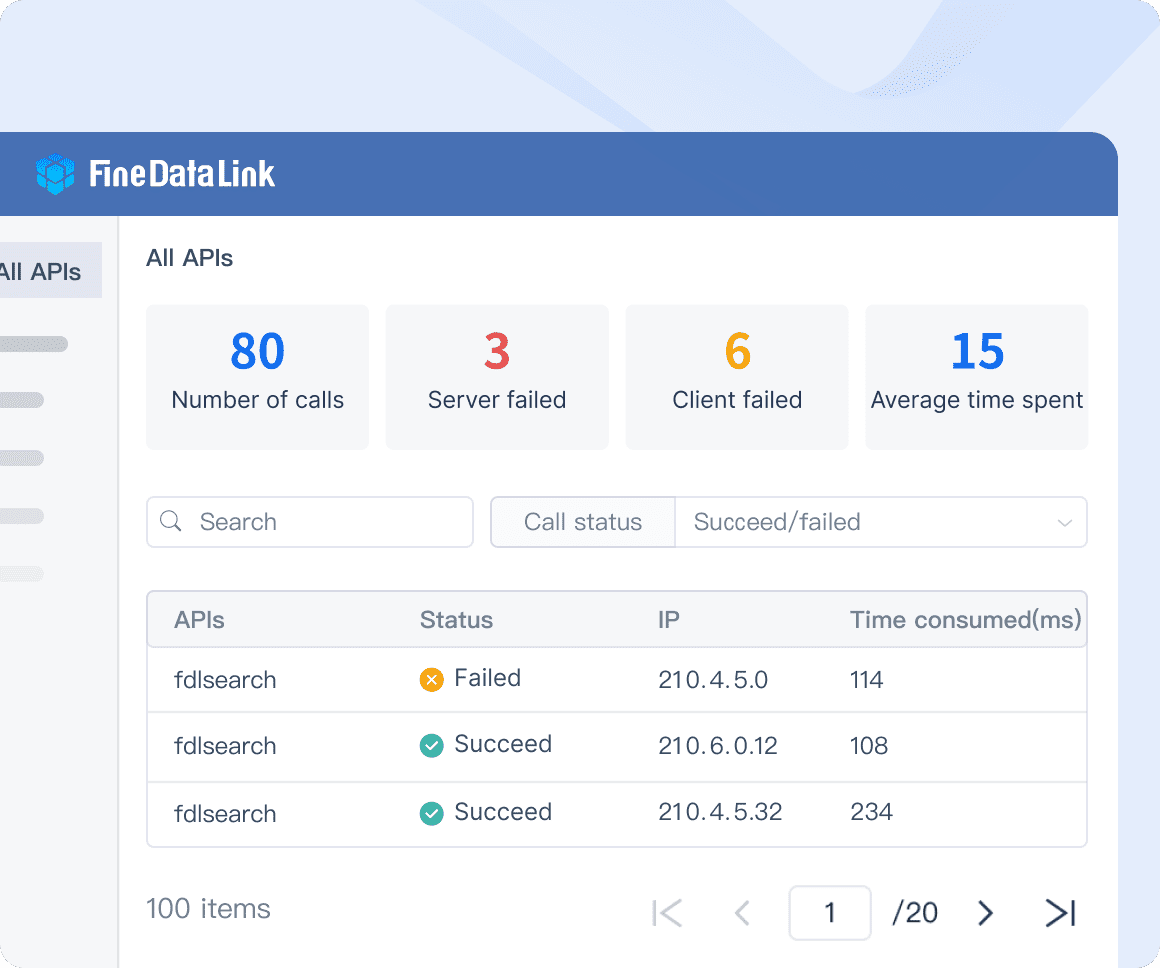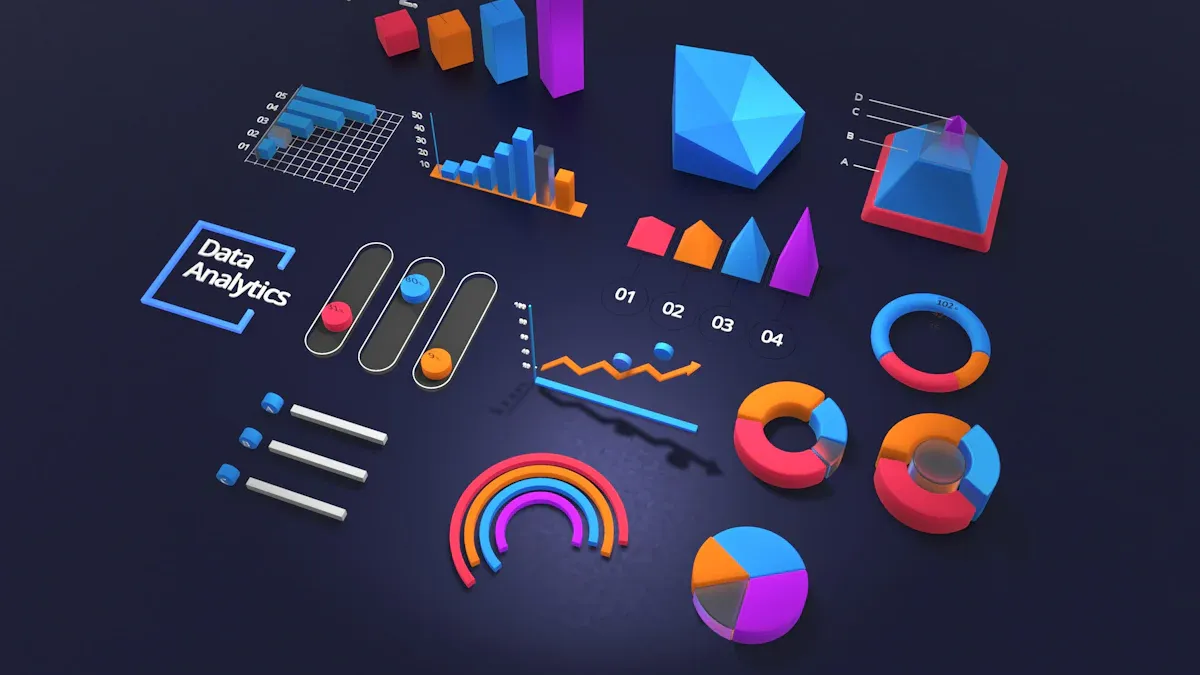Data provisioning means sourcing, transforming, and delivering data from different places to where you need it. You rely on data provisioning to make sure your data is accessible, structured, and secure for your business goals. When you have accurate and timely data, you can trust your business intelligence and make better decisions. Secure and consistent data also protects your organization and helps you meet compliance standards. Effective data provisioning gives you the confidence to act on real insights.
Data Provisioning Basics
What Is Data Provisioning
You encounter data provisioning every time you need information for analysis, reporting, or decision-making. Data provisioning means sourcing, preparing, and delivering data from different systems to the places where you need it. This process ensures that you receive data in a structured and usable format, ready for business intelligence or operational tasks.
Data provisioning involves several key steps. You start by identifying and accessing data sources, such as transactional databases, web logs, CRM systems, or social media feeds. You then collect and process the data through data ingestion. Next, you organize and clean the data, a step known as data curation. The process often uses ETL (Extract, Transform, Load) tools to move data from its source to a target system, such as a data warehouse or specialized data mart.

Data provisioning is not just about moving data. You must ensure the data is accurate, consistent, and secure. This means you need to assess data sources for issues like incomplete records or duplications, document governance policies, and automate validation checks. You also monitor performance metrics to track data quality over time.
Here is a simple overview of the data provisioning process:
- Identify and access data sources.
- Ingest and process data.
- Curate, organize, and clean data.
- Transform and load data into target systems.
- Monitor and validate data quality.
You use data provisioning tools to automate these steps and maintain control over your data environment. These tools help you connect to various data sources, transform data formats, and deliver data to the right destinations.
Why Data Provisioning Matters
Data provisioning plays a critical role in your organization’s success. When you have reliable and timely data, you can make informed decisions and respond quickly to changes. Data provisioning supports real-time analytics, test dataset creation for software development, and daily business operations.
You face several challenges when implementing data provisioning solutions. Complex IT infrastructure, rapid workforce changes, and strict compliance requirements can make the process difficult. Lack of visibility and inefficient workflows may slow down data delivery and reduce data quality.
| Challenge | Description |
|---|---|
| Complexity of IT infrastructure | You must manage intricate systems and connections. |
| Rapid workforce changes | Staff turnover can disrupt data management. |
| Compliance and regulations | You need to meet legal and industry standards for data handling. |
| Lack of visibility and control | Limited oversight can lead to inefficiencies and errors. |
| Inefficient provisioning workflows | Outdated processes can delay data access and reduce effectiveness. |
You can overcome these challenges by establishing clear data quality standards, implementing governance practices, and using advanced tools for validation and cleaning. Regular monitoring routines and staff training also help maintain high data quality.
Data provisioning is essential for digital transformation. It ensures you have current and reliable data that is easily accessible. This supports innovation and informed decision-making. The concept of data fabric addresses the challenges of data collection, integration, and delivery, making data provisioning a foundation for digital initiatives.
When you use effective data provisioning, you increase business agility. You can analyze real-time data, create reusable data products, and allow authorized users to access information for their needs. Data-driven agility helps you evaluate decisions, address inefficiencies, and optimize systems.
Data provisioning gives you the power to act on insights, improve operations, and drive growth. You build a strong foundation for business intelligence and digital transformation when you prioritize data provisioning in your strategy.
How Data Provisioning Works

Key Processes
You follow several important steps in the data provisioning process to ensure your organization receives accurate and timely data. Each step builds a strong foundation for your data provisioning processes and helps you avoid common pitfalls.
- Start with detailed data mapping. You identify where your data comes from and how it should move through your systems.
- Create clear documentation. You record every step and rule so others can understand and maintain the process.
- Build thorough schemas. You define how your data should look and what structure it must follow.
- Set specific data quality standards. You decide what makes your data trustworthy and useful.
- Outline access permissions. You control who can see or change your data, keeping it secure.
You can automate many data provisioning processes with modern technologies. Tools like SolarWinds, SailPoint Identity IQ, JumpCloud, and Google Cloud Platform help you streamline your workflow. These platforms let you automate data provisioning while following your organization’s policies and compliance standards. Automation reduces manual work and helps you keep your data consistent and secure.
Tip: Automating your data provisioning process saves time and reduces errors. You can focus on using your data instead of managing it.
Data Sources and Delivery
You often need to gather data from many sources, such as databases, cloud services, and applications. The data provisioning process must handle these sources efficiently and deliver data to the right endpoints.
To manage delivery, you can use unified endpoint management platforms. These tools help you control data flow across different devices and systems. Automating patch management ensures your data stays secure and up to date. Caching improves speed by storing copies of data closer to where you need it. You should also consider local compliance and urgency when delivering updates or new data.
| Method | Benefit |
|---|---|
| Unified endpoint management | Consistent control across devices |
| Automated patch management | Faster, safer data updates |
| Caching | Quicker data delivery |
| Local compliance prioritization | Meets regional requirements |
You can also monitor language packs and align operations with time zones. This approach ensures your data provisioning processes do not disrupt daily work and meet local needs. By following these steps, you make your data provisioning process reliable and efficient.

Types of Data Provisioning

Real-Time vs Batch
You often need to choose between real-time provisioning and batch data provisioning for your organization. Each method has unique strengths and fits different business needs. Real-time provisioning moves data instantly as it arrives. You get immediate insights and can react quickly to changes. Batch data provisioning collects data over time and processes it in scheduled intervals. This approach works well when you do not need instant results.
Here is a table that highlights the main differences:
| Aspect | Real-Time Data Provisioning | Batch Data Provisioning |
|---|---|---|
| Performance and Scalability | Immediate processing for instant insights; requires robust infrastructure for continuous data flow. | Efficient for large volumes; processes data in chunks, ideal for data warehousing. |
| Cost Implications | High operational costs due to the need for advanced infrastructure. | More cost-effective; optimizes resource usage by scheduling tasks. |
| Suitability | Best for applications needing immediate insights (e.g., fraud detection). | Suitable for scenarios where immediate analysis isn't necessary (e.g., historical analysis). |
You benefit from real-time provisioning when you need up-to-date information, such as monitoring transactions or detecting fraud. This method can be expensive because it requires constant monitoring and advanced systems. Batch data provisioning helps you process large datasets efficiently and reduces strain on your systems. However, you may experience delays and outdated information.
Tip: Choose real-time provisioning for time-sensitive tasks. Use batch data provisioning for routine analysis or historical reporting.
Self-Service Approaches
Self-service data provisioning gives you direct control over your data needs. You can access, request, and manage data without waiting for IT support. This approach improves your experience and reduces bottlenecks in your workflow.
Here are some key advantages of self-service data provisioning:
| Advantage | Description |
|---|---|
| Cost Reduction | Self-service provisioning helps lower operational costs by reducing manual processes and optimizing resource allocation. |
| Improved User Experience | Users gain direct control over their resource requests, improving satisfaction and reducing bottlenecks. |
| Scalability | Organizations can scale resources up or down depending on demand, ensuring responsiveness to changing needs. |
| Flexibility | Self-service provisioning allows for quick adjustments to resource allocation based on current requirements. |
You also help your organization scale resources and respond to changing demands. Self-service data provisioning platforms can reduce IT workload by up to 70%, allowing business users to work more efficiently. You gain instant access to essential tools and resources, which boosts productivity and speeds up innovation.
Note: Self-service data provisioning requires proper management and oversight. You must address potential security risks and ensure compliance with your organization’s policies.
You can use self-service data provisioning to improve scalability and enhance user experience. This approach empowers you to make faster decisions and reduces reliance on IT teams.
Solutions for Effective Data Provisioning
FineDataLink Platform
You need a reliable platform to achieve effective data provisioning in your organization. FineDataLink stands out as a modern data integration platform designed to address the challenges of sourcing, transforming, and delivering data across multiple systems. You can use FineDataLink to connect, synchronize, and manage data from over 100 different sources. This versatility makes it suitable for businesses with complex data environments.
FineDataLink supports effective data provisioning through a range of advanced features. You can see the core features and their benefits in the table below:
| Feature | Description |
|---|---|
| Multi-source data collection | Supports various data sources such as relational, non-relational, interface, and file databases. |
| Non-intrusive real-time synchronization | Synchronizes data in multiple tables or the whole database, ensuring time sensitivity of data. |
| Data service construction at low cost | Constructs enterprise-level data assets relying on APIs for interconnection and sharing. |
| Efficient intelligent operation | Allows flexible scheduling of tasks and real-time monitoring, reducing O&M workload. |
| High extensibility | Built-in Spark SQL allows calling scripts like Shell script. |
| Efficient data development | Equipped with a dual-core engine (ELT and ETL) for customized solutions. |
| Five data synchronization methods | Provides methods based on timestamp, trigger, full-table comparison, full-table increment, and log parsing. |
| Security | Supports data encryption and SQL injection prevention rules. |
| Process-oriented low-code platform | User-friendly and easy to start, contributing to high development efficiency. |
You can take advantage of FineDataLink’s real-time data synchronization to ensure your business always works with the most current information. The platform’s low-code interface lets you build and manage data pipelines without deep programming knowledge. You can also use advanced ETL and ELT capabilities to transform and load data efficiently.

FineDataLink supports hybrid and multi-cloud environments. You gain flexibility to manage data across different platforms and adapt to changing business needs. The platform’s support for over 100 data sources means you can integrate data from almost any system you use.
You can see how FineDataLink delivers effective data provisioning by looking at real-world results. For example, BOE Technology Group faced challenges with data silos and inconsistent metrics. By implementing FineDataLink, BOE unified its data sources, standardized metrics, and built a centralized data warehouse. This transformation led to a 5% reduction in inventory costs and a 50% increase in operational efficiency. You can read more about this case on the FanRuan website.
FineDataLink gives you the tools to break down data silos, automate data flows, and ensure high-quality, secure data provisioning across your organization.
Business Intelligence Integration
You can further enhance effective data provisioning by integrating your data provisioning platform with business intelligence (BI) tools. This integration creates a unified view of your data, which improves accuracy and enables real-time insights. You empower your teams to make better decisions and respond quickly to market changes.
When you connect BI tools with your data provisioning platform, you enable self-service analytics. Non-technical users can analyze and visualize data independently. This reduces your reliance on IT teams and speeds up the decision-making process. You foster a data-driven culture in your organization, making it easier for everyone to access and use data.
You benefit from several advantages when you integrate BI tools with effective data provisioning:
- You gain a unified view of all your data, which improves accuracy and consistency.
- You enable real-time insights, allowing you to act quickly on new information.
- You improve operational efficiency by automating data flows and reducing manual work.
- You support scalability and adaptability, especially when using cloud-based BI systems.
Cloud-based BI platforms work well with modern data provisioning solutions. You can scale your analytics as your data grows and handle complex queries with ease. Tailored cloud infrastructure reduces operational friction and helps you achieve better analytics outcomes.
By combining effective data provisioning with business intelligence integration, you create a powerful foundation for data-driven decision-making and business growth.
Benefits and Challenges in Data Provisioning
Key Benefits
You gain many advantages when you implement a strong data provisioning strategy. Automation reduces manual errors and improves data accuracy. You can speed up the provisioning process, allowing your team to access data faster and make decisions quickly. Security improves because you grant access based on roles, which lowers the risk of unauthorized data exposure. You also save money by streamlining onboarding and reducing manual tasks. Transparency increases, giving you a clear view of who has access to data and how resources are allocated.
Here is a table that summarizes the most significant benefits:
| Benefit | Description |
|---|---|
| Reduces Manual Errors | Automation ensures consistency and accuracy in provisioning tasks, eliminating mistakes. |
| Speeds Up The Provisioning Process | Automated workflows allow for faster data delivery and reduce delays. |
| Minimizes Security Risks | Role-based access lowers the chance of unauthorized data breaches. |
| Reduces Onboarding Cost | Streamlined processes save time and resources. |
| Increases Transparency & Visibility | Complete understanding of data access and resource allocation. |
Organizations report impressive results after improving their data provisioning processes. Mizuho Securities achieved a 90% reduction in test data delivery time and saved $700,000 in labor costs each year. Morningstar Fiduciary Retirement Services reduced data provisioning time by 70% and improved software quality.
You can see how a well-designed data provisioning strategy supports efficient data management and drives business success.
Common Challenges
You may face several challenges when you build or maintain your data provisioning strategy. Data security and compliance remain top concerns. You need to log every access event so your data governance team can track who accessed the data, when, and why. This visibility is vital for compliance and breach investigations.
Privacy regulations require you to use de-identified data in test environments. Creating sanitized datasets can be difficult, especially with complex databases and frequent schema changes. This process often takes extra time and increases the risk of data leaks.
You also need to manage data from many sources. Integrating data into your data management ecosystems can be complicated. You must keep data accuracy high while handling large volumes and different formats. Outdated data management strategies may slow down your workflow and reduce efficiency.
Tip: You can overcome these challenges by using automated tools, setting clear policies, and training your team on best practices in data management.
Best Practices in Data Provisioning
Steps for Effective Data Provisioning
You can achieve reliable data provisioning by following a clear set of steps. Start by defining your requirements. Decide what data your system needs, how often you need updates, and what quality standards you must meet. Next, prioritize data quality. Set up validation rules at every ETL stage to catch missing values or inconsistencies early. Design your system for performance by using indexing, partitioning, and parallel processing. This approach reduces load times and speeds up queries. Embed governance policies from the beginning. Make sure your workflows follow internal data policies and regulatory standards. Finally, maintain your system continuously. Monitor job performance, handle failures quickly, and keep your databases optimized.
Here is a step-by-step guide to data provisioning best practices:
- Define requirements clearly.
- Prioritize data quality at every stage.
- Design for high performance and scalability.
- Embed governance and compliance policies.
- Maintain and monitor your data systems regularly.
Automation plays a key role in modern data management. When you automate repetitive tasks, you reduce human error and improve reliability. Modular design helps you scale and maintain your workflows. Proactive monitoring ensures your data systems run smoothly.
Security and Compliance
Security and compliance are essential in data provisioning, especially in regulated industries. You must protect sensitive data and follow strict rules. Different regulations require specific actions:
| Regulation | Key Considerations |
|---|---|
| GDPR | Consent management, data subject rights, impact assessments, data protection officers, breach notification |
| HIPAA | Privacy and security policies, data encryption, employee training, risk assessments |
| PCI DSS | Secure network infrastructure, cardholder data protection, access management, regular monitoring and testing |
Modern data provisioning platforms help you meet these requirements. Features like dynamic query enforcement, privacy controls, and data masking protect your information. You can apply access controls and privacy transformations to approved data products. Consistent policy enforcement across cloud and on-premise environments keeps your data safe. By following these best practices, you build a strong foundation for secure and compliant data provisioning.

Data provisioning shapes your ability to compete and grow in a digital world. You need accurate, timely data to drive business intelligence and support digital transformation. By adopting effective data provisioning solutions like FineDataLink, you simplify integration, improve data quality, and boost efficiency. Take time to review your current data strategies. Modern platforms can help you unlock better insights and make smarter decisions for your organization.

Continue Reading About Data Provisioning
Enterprise Data Integration: A Comprehensive Guide
What is enterprise data and why does it matter for organizations
Understanding Enterprise Data Centers in 2025
Enterprise Data Analytics Explained for Modern Businesses
FAQ

The Author
Howard
Engineer Data Management & Ahli Data Research Di FanRuan
Related Articles

Best Data Lake Vendors For Enterprise Needs
Compare top data lake vendors for enterprise needs. See which platforms offer the best scalability, integration, and security for your business.
Howard
Dec 07, 2025

Top Data Ingestion Platform Compared
Compare the top 7 data ingestion platforms, including real-time features, integration, scalability, and pricing to find the best fit for your business.
Howard
Dec 04, 2025

Best Data Lake Companies For Enterprise Needs
Compare top data lake companies for enterprise needs. See which platforms excel in scalability, integration, security, and analytics for businesses.
Howard
Dec 04, 2025



